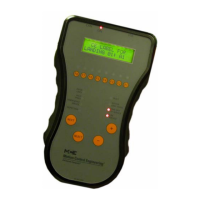Startup - Inspection Operation
3-4 Manual # 42-02-1P21
Set Up for Construction Operation
If required, it is possible to run the car during construction to help complete work in the hoist-
way. In this mode, the car runs at inspection speed. If they are in place, cartop controls may be
used or the car may be run from the controller or a temporary run box. (Please refer to “Tempo-
rary Run Box Hookup” on page 3-6.)
Required Connections
Please refer to “Construction Mode Jumper Requirements” on page 3-5 and to the following
illustration and text.
Figure 3.1 Jumpers Used Before Final Equipment Connected
Minimal equipment requirements are:
•Pump motor and valves.
• SAFH, SAFC, ESC: Hoistway and car safety devices. Connecting 2 bus to these terminals
(as described in Table 3.1) will cause relay SAFS on the HC-CTL-2 board to pick and light
the SAFS indicator (provided no safety-dropping faults are present).
• GS, DLAB: Door locks. (GSR, DLABR: Rear door logic and door locks.) Connecting 2 bus
to these terminals will cause relay SAFL on the HC-CTL-2 board to pick and light the SAFL
indicator (when direction has been established). The DLK indicator on the HC-MPU board
will turn ON (provided that no safety-dropping faults are present).
• TO2: Thermal overload protection. Connecting TO1 to TO2, as specified on the job prints,
will clear the OLM INPUT IS LOW fault (Overload monitor). When this fault is present the
car can only move down.
If rear doors:
• 2 - GSR
• 2 - DLABR
• 2 - DPMR (Spare input, UIO or CTL-2 - see prints)
To run on Machine Room Inspection:
• Jumper INCT to 2 Bus
HC-CTL-2 Board
HC-DVR Board
FRS
INN
DLAB
GS
FRSA
FRSM
SAFH
SAFC
ESC
GSR
DLABR
2
2
2FS
TO2
UNTD
USL1
USL2
DSL1
DSL2
DNTD
TO1
2L
DPM

